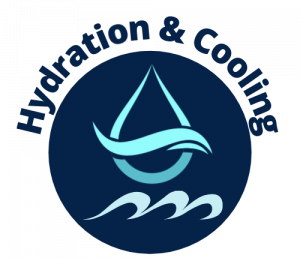How Proper Hydration Transforms Young Athletes
Are your young athletes drinking enough to perform at their best?
Hydration isn’t just about quenching thirst—it’s the key to strength, endurance, focus, and injury prevention on the field. Coaches and parents often prioritize training drills and game strategies, but proper hydration is what keeps young athletes safe, healthy, and competitive.
🚨 The Hidden Epidemic: Dehydration in Youth Sports
Dehydration is more common than many realize, and its effects can be serious:
-
⚡ Faster fatigue and slower reaction times
-
🧠 Impaired focus and decision-making
-
💪 Increased risk of cramps, heat illness, and injury
-
🛑 Performance drop-off during practices and games
Athletes may not always recognize thirst as a warning sign. By the time symptoms appear, performance has already declined.
💧 Why Proper Hydration Matters
Water supports every aspect of athletic performance:
-
🌡️ Regulates body temperature during intense training
-
🚀 Delivers oxygen & nutrients to working muscles
-
🧽 Flushes waste products to speed recovery
-
⚙️ Keeps joints lubricated to reduce injury risk
-
🧠 Supports concentration & mental clarity
For athletes training in the heat—like football players in August—proper hydration can be the difference between finishing strong and sitting out with heat exhaustion.
⚠️ Warning Signs of Poor Hydration
Parents and coaches should watch for:
-
Dizziness during or after practice
-
Headaches or nausea in the heat
-
Persistent fatigue
-
Dry mouth or dark urine
-
Muscle cramps
-
Declining performance late in games
Don’t wait until symptoms sideline your athlete. Prevention is far easier than recovery.
💦 Team Hydration Solutions
Individual water bottles often aren’t enough for serious training sessions. That’s why hydration stations are a game-changer for teams:
-
🚰 Football hydration carts serve entire squads quickly
-
❄️ Portable misting fans keep players cool in extreme heat
-
🔋 Rechargeable water wagons ensure water is available anywhere
-
⚡ Sideline cooling stations maintain performance when temperatures rise
When hydration is easy and accessible, athletes drink more—and play harder, longer, and safer.
🌡️ Managing Heat & Hydration Together
Young athletes are especially vulnerable to heat stress. Combining hydration with cooling technology provides the best protection:
-
✅ Misting fans lower body temperature quickly
-
✅ Cooling benches reduce recovery time between plays
-
✅ Shade stations protect from direct sun during long tournaments
Hydration + cooling is the winning combo for peak performance.
📣 Call to Action
👉 Ready to keep your athletes safe, strong, and performing at their best?
-
Explore our hydration stations and cooling solutions
-
Request a custom quote for your team’s needs
-
Or call us directly at 800-487-7432 for expert help
📩 Prefer email? Reach us at service@hydrationandcooling.com
Remember, a well-fueled and properly hydrated athlete is not just a better performer—they’re healthier, happier, and better equipped to enjoy their sport for years to come. Give your young athletes the foundation they need to thrive both on and off the field.



